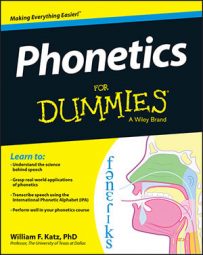You make vowels in a different way than consonants. Vowels don't involve air blockage, but instead require a more continual sound flow and sound shaping. Phoneticians describe vowel production in terms of HAR:
Height (whether the tongue is high, mid, or low in the mouth)
Advancement (how front or back the tongue is)
Rounding (whether the lips are protruded, for sounds like the "oo" of "boot.")
Another way is to consider place of articulation (where in the mouth the tongue is place) and manner of articulation (how the sound is made) features. Here are some key manners of articulation terms for consonants:
Cardinal vowels: Anchor points worked out by the phonetician Daniel Jones to help people classify vowels. Cardinal vowels are special vowels, not really found in any world languages, that phoneticians use for ear training to later detect small differences in sound quality between real-world examples.
Diphthong: Sounds that glides from one vowel to another, such as in "cow," "boy," and "fight". These sounds are made with two tongue positions.
Lax/tense: An important grouping describing two phonological classes of vowels:
Lax vowels can only appear in stressed, closed syllables (ending with a consonant).
Tense vowels can also be in open syllables.
Monophthong: A vowel with a single sound quality, such as the middle sound in "rat" or "bit". These sounds are made with one tongue position.
Rhotic: Also referred to as r-coloring, rhotic means there is an "r" like sound present, such as the vowel sounds in "fear," "fare," "far," and "for".
Schwa: A mid-central, unrounded vowel [ə] that is poorly named because it rhymes with "duh".

